Sea kale is a robust and peppery brassica that grows wild on its rocky home shores of the British Isles and the North Sea. The salt-tolerant vegetable was popular in Victorian England. In the fledgling United States, Thomas Jefferson grew it at Monticello, forcing it beneath pots, which blanched the leaves and encouraged early growth before spring arrived. Today, in the US, perennial sea kale is more likely to be seen in shoreline landscape design than in vegetable gardens. But its crisp leaves, stout stalks and peppery flowers make it an exceptional vegetable.
Photography by Marie Viljoen.
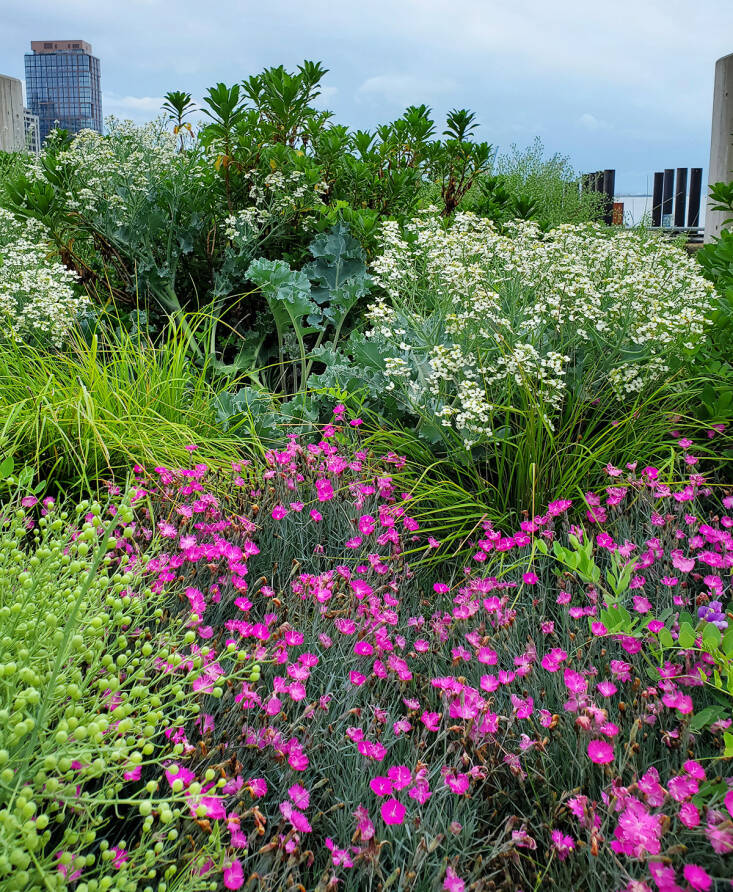
Botanically, sea kale is Crambe maritima. It is an edible cruciferous perennial whose frilled leaves are held upright on thick midribs, and whose myriad white flowers reach their ornamental peak in late spring. Reputedly hardy down to USDA growing zone 5, and unlike other well-known vegetable garden stalwarts in the brassica family, sea kale returns every spring. Plant it once. After it has bloomed its showy and beadlike seed pods persist on the plant for weeks. (When young and tender, these green seeds make superb pickles and horseradish-hot condiments.)

In the United Kingdom, wild sea kale is a now protected plant and may only be collected from shorelines by permission. In the US, it has naturalized in the Pacific Northwest and it grows abundantly in the richer soils of horticultural settings.

At Monticello, Jefferson recorded sowing sea kale seeds in 1809. The first tender stems and leaves of established plants were a sought-after delicacy. To produce these pale stems, established plants were forced like rhubarb by being covered in an upturned pot or with straw.
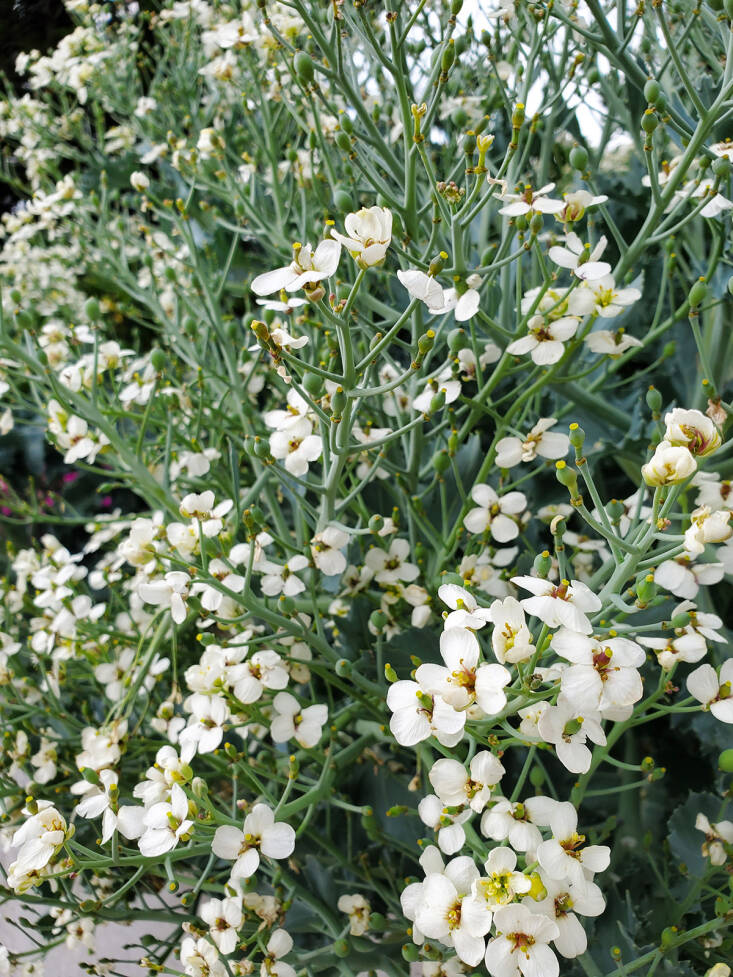
Mrs. Beeton was a journalist and household goddess of mid-19th century England. (Extraordinarily, given her influence, she died at the age of 28, from a post-partum infection.) Sea kale was an everyday vegetable on her menus, which now make for enlightening reading. Here are just two of those menus, gleaned from Mrs Beeton’s Dictionary Of Every-Day Cooking, the abridged version of her magnum opus, Mrs Beeton’s Book of Household Management. It is digitized by Project Gutenberg (to find a key word in the digital files, press Command F on your desktop or laptop keyboard).
April, Plain Family Dinners
Sunday —1. Clear gravy soup. 2. Roast haunch of mutton, sea-kale, potatoes. 3. Rhubarb tart, custards in glasses.
Dinner for Six Persons
First Course.—Vermicelli soup; brill and shrimp sauce. Entrées.—Fricandeau of veal; lobster cutlets. Second Course.—Roast fore-quarter of lamb; boiled chickens; tongue; vegetables. Third Course.—Goslings; sea-kale; plum pudding; whipped cream; compôte of rhubarb; cheesecakes; dessert.
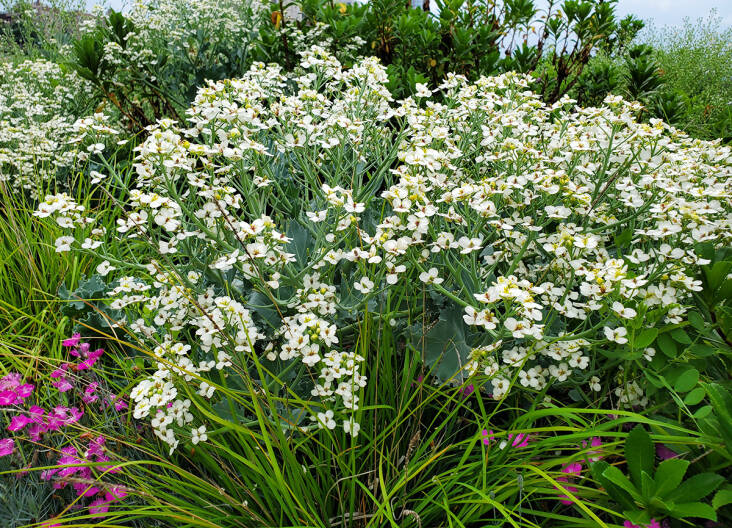
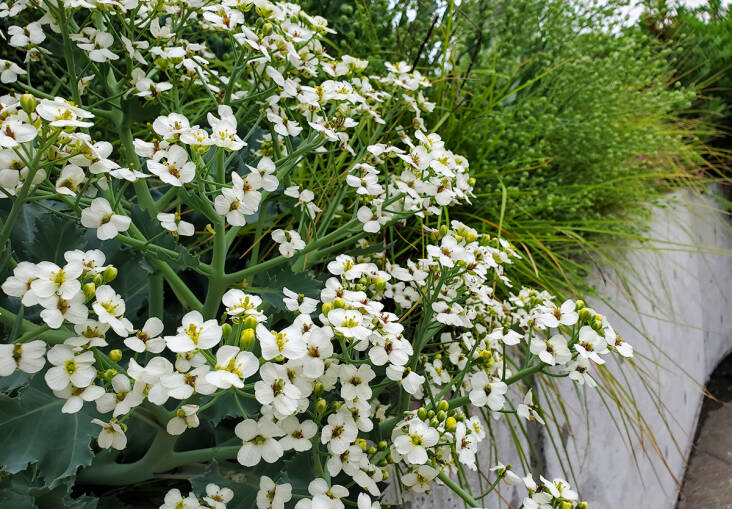
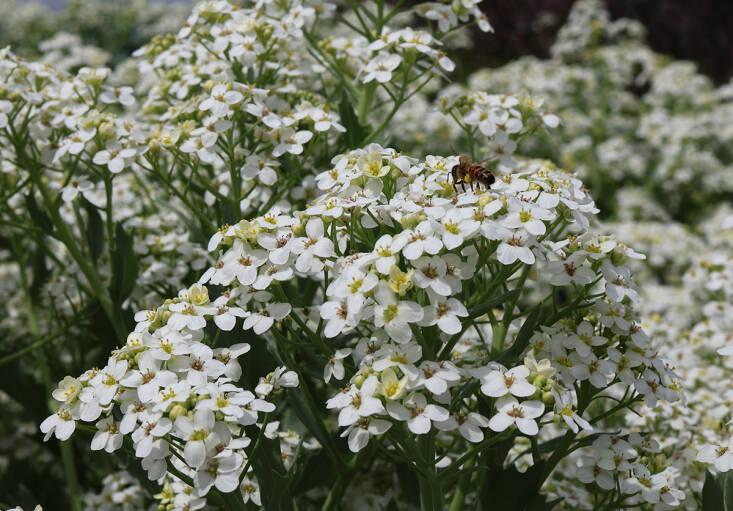
Cheat Sheet
- Sea kale is a brassica, like cabbage, kale, Brussels sprouts, cauliflower, etc.
- It is Crambe maritima, and native to Northern European shorelines.
- In the wild, it is a protected plant within the United Kingdom.
- Forced sea kale shoots were eaten like asparagus in Victorian England.
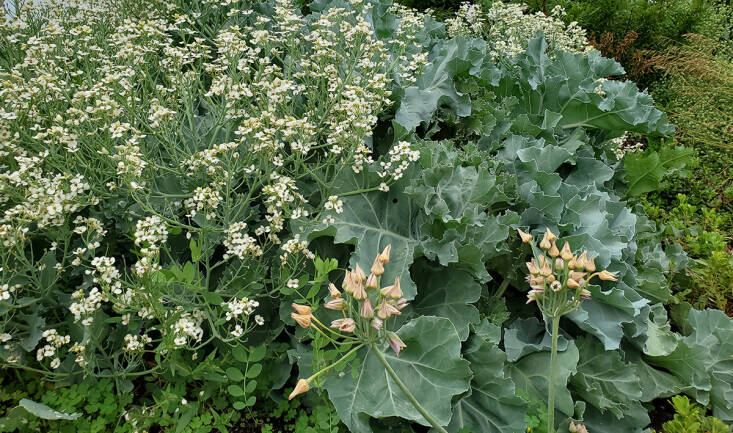
Keep it Alive
- Sea kale is hardy from USDA zones 5 – 8.
- Sow sea kale seeds like broccoli, and nick the seed capsules to improve germination.
- For faster cultivation, clip fleshy side roots from the established pants and plant in early spring.
- It thrives in full sun.
Fedco Sea Kale seeds are $4 for 0.5 grams.
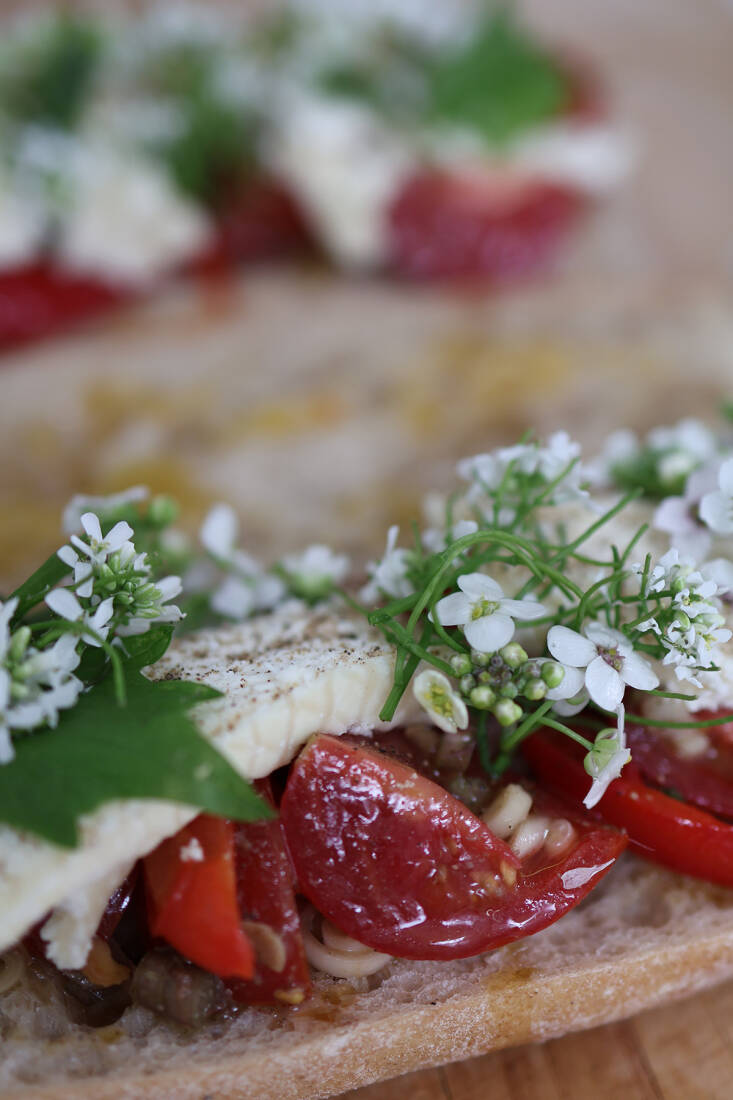
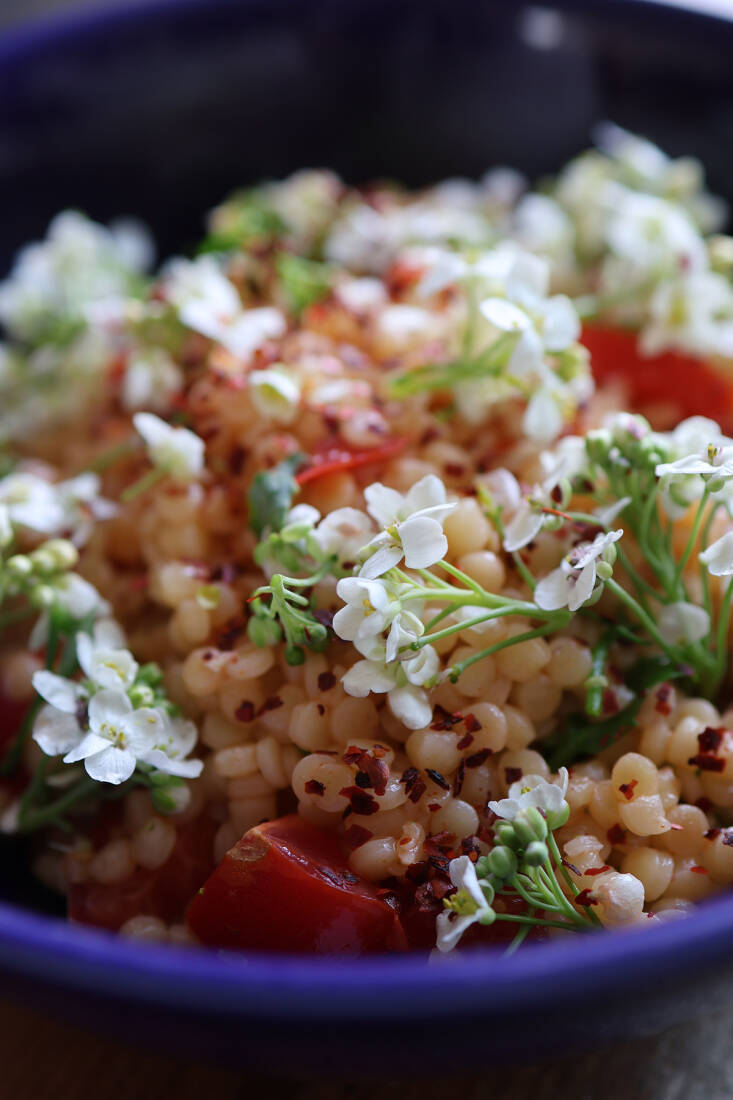
Sea Kale Flower Maftoul (Pearl Couscous)
Serves 2
This deceptively simple bowlful is loaded with bright flavor, spice, and comfort.
- 4 Tablespoons extra virgin olive oil
- 1 cup maftoul
- 1 1/2 cups hot water or broth of choice*
- 1/4 teaspoon salt
- 6 cherry tomatoes, halved
- 2 packed cups sea kale flowers
- 1 teaspoon Aleppo pepper
* For accuracy, follow the instructions on the box or bag for liquid-to-maftoul ratio, since thicknesses vary.
In a pot over medium heat, warm 2 Tablespoons of the olive oil and add the maftoul. Toast it for a couple of minutes, shaking the pot a few times. Increase the heat to high, pour in the water or broth, and add the salt. When it comes to a boil, cover with a lid and cook over the lowest heat possible until all the water has been absorbed. Remove the lid, add the remaining 2 Tablespoons of olive oil, and stir gently with a fork. Toss in 1 cupful of the flowers and tomatoes, and stir again to wilt the flowers. To serve, divide the maftoul between two bowl and sprinkle the remaining flowers over the top, with shower of Aleppo pepper. Serve warm or cool.
See also:
- Chrysanthemum Greens: A Fragrant Leafy Vegetable
- Milkweed Pods: A Native Summer Vegetable to Grow, Cook, and Eat
- Edimentals Are Trending. Here’s Why You Should Include Them In Your Garden
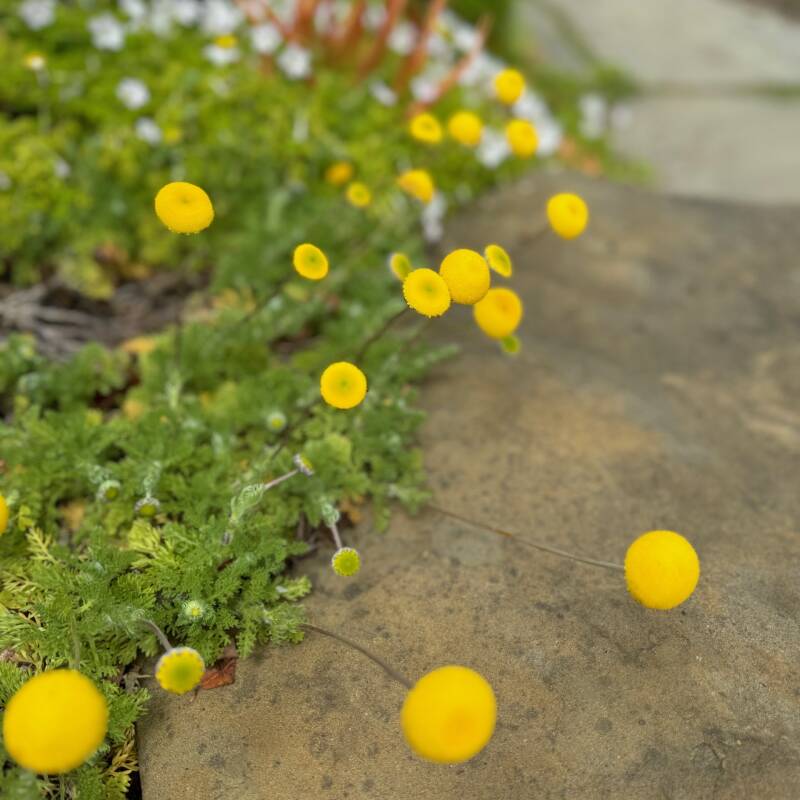

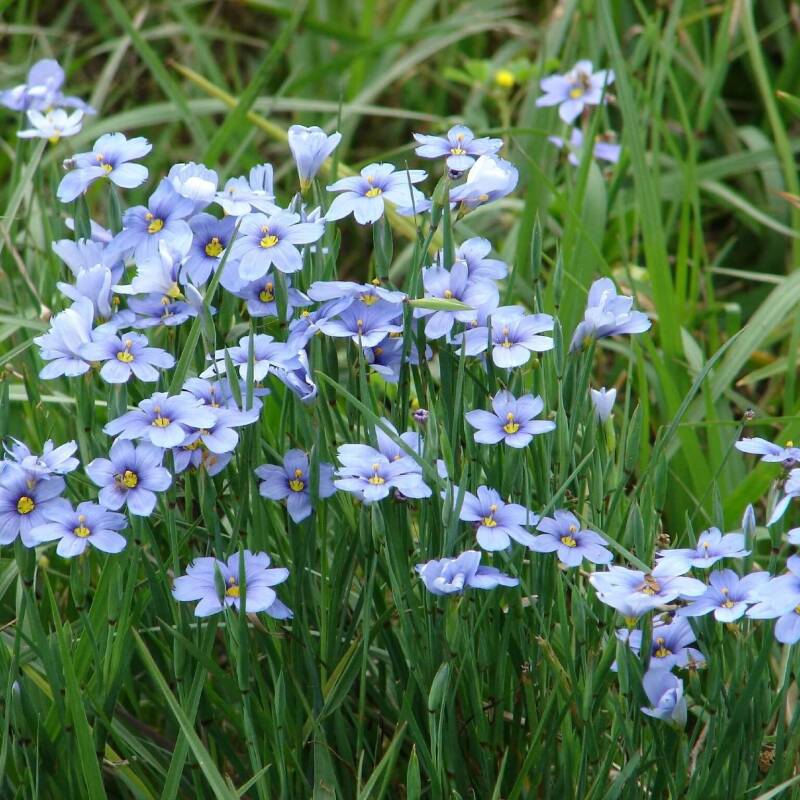







Have a Question or Comment About This Post?
Join the conversation